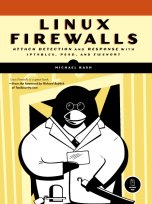ShmooCon Talk Slides Posted
26 March, 2007
(Update: 12/09/2007): A video of my talk is available here.
One thing I tried to emphasize in this talk is that there are real cases for automatically responding to network attacks - for example, consider the following scenario:
- A remotely exploitable vulnerability is found within some server software X that you have deployed in your network. Suppose this server is a critical corporate application, and taking it down so that it can be upgraded or patched requires an scheduling outage window.
- Some blackhat writes a worm that exploits this new vulnerability, and the worm begins spreading.
- The Snort community develops a signature for the worm and suppose this signature does not require fancy Snort rule options such as pcre or asn1, and so this signature can be translated by fwsnort.
- Because the server software cannot just be taken down to be fixed immediately, there is a window of time in which the worm may successfully compromise systems that are running this server software.




